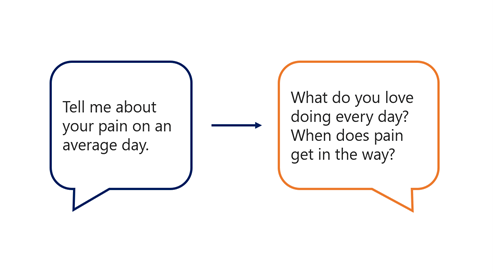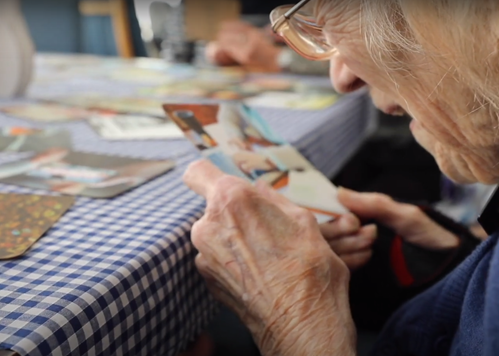Georgia Brennan-Scott is exploring living labs methods and practices. Her research will inform the legacy of the INCLUDE+ network, hopefully culminating in a living lab of our own.
In this blog post, I’ll share how you can create space for meaningful conversations, learned in the context of co-creation.
Lab4Living is a living lab in Sheffield working alongside communities to develop solutions in design, healthcare and creative practices. I spent some time with Joe Langley, lead Research Fellow, and Ursula Ankeny, Design Researcher and PhD student, at the lab’s space in Sheffield city centre.
Useful definitions:
Living lab: ‘Living labs are real-life test and experimentation environments that foster co-creation and open innovation among the main actors of the Quadruple Helix Model, namely: citizens, government, industry, and academia’ (from the European Network of Living Labs)
Co-creation: when citizens collaborate with designers to ‘co-create’ a product or service, especially where they are a current or future user. (drawing upon definitions from Brandsen et al. 2018 eds.)
In any given research project, design researchers at the Lab will work directly with participant collaborators, or co-creators, to understand their perspective. These are user experts—typically people with lived experience of a condition. Ursula and Joe are the design and research experts, collaborating with the user experts to design something for and with them. Co-creation can be a challenging and unintuitive process, here are some of the lessons Ursula and Joe shared with me, which have value in all kinds of collaboration contexts.
Helping people share
1. Big picture > problem focused
A lot of what Ursula talks about is creating a more open-ended discussion in what otherwise might be quite a negative conversation.

Where these conversations could centre the condition, Ursula highlights the value of centring the person. Co-creators are people, not just patients. Taking a more open ended approach to these conversations not only creates a more positive environment, but can improve the shared understanding between co-creators and designers.
2. Objects to drive conversation
Both Ursula and Joe highlighted the value of physical objects, artefacts, cards and prompts when talking with co-creators, especially about difficult subjects.
A concrete object can provide physical stimulation or comfort, either as something to fiddle with or for the grounding experience of holding something. Equally, an image card or word prompt can both provide a sense of inspiration and make a person feel less self-conscious when sharing something profound and personal.

These tools are designed to help open people up to conversation and create a sense of permission to share. The idea is to break down the typical ways of being—perhaps feeling uncomfortable talking about yourself, or thinking that sharing sad things is a downer—and create a space where this is welcomed. The approach is based on the view that an open dynamic with co-creators funnels into better design processes and therefore better design outcomes.
Ursula shared that as a facilitator you’ll be surprised by how people respond to certain prompts in unanticipated ways. A photo card might ask a question of the participant that can’t be formulated with words. So in this way, the prompts interact with participants in a way facilitators can’t, and they also take some pressure away from facilitators to direct conversation and inspire sharing. Additionally, when working with young children or people with challenges reading or speaking, images can be a powerful way of triggering thinking.
Making evidence talk
1. Create a dialogue between different forms of evidence
Joe talks about the importance of evidence in research. Living labs centre lived experience by including co-creators in the design process. However, Joe is clear that lived experience is not the full picture. When incorporataing different forms of insight—lived expertise and research expertise—there must be a critical debate. One perspective doesn’t override the other and both must be fed into the design process.
When people providing different perspectives are in the same room, it’s easier to understand what’s possible. For example, a designer may know exactly what the prototype materials can do and the co-creator may have a strong sense of what they need the prototype to do. In this case, there can be a conversation between the two ‘experts’ where they can both learn from each other.
2. From disagreement to development
Joe highlights the importance of not shying away from disagreement. There will be discomfort, but in dialogue, the discomfort is [more] shared, distributed and transparent. In a more traditional design process, the discomfort might be absorbed—often by the user. By incorporating these sometimes uncomfortable conversations into the iterative development process, the disagreements can be channeled into creating something better.
3. Make evidence interactive
When it comes to presenting evidence or research, there are a few typical ways—often some kind of textual summary. Joe presents the challenge: don’t just rely on words to reflect upon work, include other artifacts and processes. L4L have in the past created a game or a set of objects or cards. By making evidence interactive it becomes something others can engage with and the process of meaning-making can become a more collaborative and iterative process.
Co-creation allows for lived experience to inform a design process along with evidence-based research. By creating space and mechanisms for conversation, facilitators can enable opportunities for meaningful contribution from participants. On a broader scale, beyond co-creation in design contexts, Joe and Ursula’s advice nudges a shift towards engaging more creatively in collaborative decision making. I think there are lessons here for all of us, and I challenge you to try some of them out next time you’re initiating a challenging conversation.
